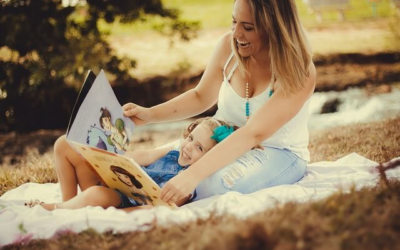One of life’s most miraculous joys is the birth of a child. It is accompanied by a diverse range of emotions like excitement, joy, and, sometimes, worry. One aspect that may bring you stress is finding your newborn baby’s skin flaking.
Newborn Baby’s skin peeling in newborns is frequent, but not usually a reason worth worrying about. Within the first few weeks following birth, babies’ highly delicate skin undergoes significant changes in look and texture. But, in most circumstances, it is natural and does not necessitate any medical intervention.
However, medicinal treatment may be necessary to address the issue if the skin peeling is severe or chronic. This article teaches about the causes and treatment of skin peeling in babies.
Is Baby’s Skin Peeling Normal?
Whenever your baby’s skin starts peeling, the very first thing that pops into your head is whether this is normal. You can now rest because all of it is normal.
- All babies shed their natural skin outer layer within the first two to three weeks of life.
- Babies are enveloped by protecting fluids for the first nine months of their lives; thus, being introduced to dry air is a new experience.
- It may be a challenging shift. When newborn babies adapt to the world outside the womb, they must develop a new layer of skin that fits their unfamiliar setting.
- It entails removing their old skin and replacing it with a more rigid, more enduring outer layer.
As a result, the skin of most babies will peel off within the first few weeks after birth. Always remind yourself that it’s completely natural and will go away shortly.
What Causes It?
A baby’s skin is sensitive, mainly after birth, and your baby’s skin might be peeling. Currently, dry or flaking skin is typical and does not require any medical intervention. As a result, don’t be shocked if you see dryness, flaking, or peeling skin on your older infant or toddler at some time.
You may notice more recurrent dryness, peeling, or flaking if your infant has a skin problem such as atopic dermatitis (a type of eczema). But the points mentioned below are the factors that cause skin peeling in newborns.
1. Vernix Loss
During pregnancy, your baby is enveloped by amniotic fluid. Amniotic fluid nourishes and safeguards your baby while they are in the womb. It also facilitates the transfer of nutrients from mother to kid.
This dense, waxy layer protects the infant from the amniotic fluid within the womb. The loss of this outer coating may result in average skin peeling during the first few weeks after delivery.
2. Water Long-Term Exposure
Water can eliminate some natural oils in your baby’s skin after birth when they grow in a fluid-filled pouch in the womb. These natural oils are a barrier, preserving moisture while preventing pathogens.
When your baby is overexposed to water, often in the form of extended baths, their epidermis could become irritable and itchy since the oils that exist aren’t able to retain the essential hydration from evaporating until their bodies can restore it.
If this occurs, you may find flaking, dryness, peeling, and other indications of newborn dry skin on their face.
3. Adult Skin Care Products
Since your newborn’s skin hasn’t developed its natural defenses, it is susceptible throughout the first few months of its development.
Due to this delicacy, lotions and moisturizers meant for adults might affect sensitive places on your baby’s body, resulting in baby dryness on their face.
Even the smallest quantity of adult skin creams, such as those that wear off when you touch or snuggle your infant, might adversely influence their skin.
4. Way Too Much Sunlight
Freezing, dry air can trigger dryness and dehydration on the layer of your newborn’s skin, leading to dry skin. In several cases, the flip side of the spectrum — far too much sunlight — may also contribute to dryness.
Therefore, excessive sun exposure should not be a problem for neonates. How? The safest strategy is to keep your kid out of direct sunlight until they are six months old. Their fragile, delicate skin isn’t primed for the sun’s harsh rays.
Even if nothing happens and your child does spend time in the sun, be aware that this exposure may cause dry skin on their face.
5. Dry, Cold Air
The cold, dry air wherein you reside might cause excess dryness and newborn chapped skin on their face in their developing body.
Even if the humidity and temperature of their playroom, lounge, or bedroom are suitable for you, a baby’s skin is more delicate and dries down faster than yours.
6. Eczema
On extreme occasions, a skin disease called atopic dermatitis (also known as eczema) can cause a baby’s dry skin. The actual cause of eczema is unclear. However, it may have a hereditary component.
However, doctors have shown that over half of persons with moderate- to severe eczema also have additional allergies, such as:
- Asthma
- Hay fever (a.k.a. seasonal allergies)
- Rhinitis due to allergies
- Allergic to foods
- Many of these allergies do not manifest themselves in early childhood. They may instead show as eczema.
Home Remedies to Treat Baby’s Skin Peeling?
Since we’ve discussed what triggers your baby’s skin to peel, let us explore what you can do to heal it.
1. Make Use of Lukewarm Water
Hot water breaks the skin at all ages, even babies. If your child has peeling skin, you should avoid using hot water.
A temperature of 100° F is ideal for your newborn’s delicate skin. Always end your bath with an application of soothing lotion.
2. Make Use of a Baby Cleanser (Not Soap)
Only bathe your newborn with a cleanser primarily designed with organic elements for newborns to help cure and minimize peeling skin. Your soap is most likely too abrasive for your newborn’s fragile skin. Baby shampoos are also excellent for your newborn baby.
3. Avoid Long Baths
Extended baths can dry and dehydrate your newborn’s fragile skin. Make the most of your baby’s bath! The optimal bath time for your infant is five to seven minutes. Allow it to last no more than 10 minutes.
4. Try Baby Moisturizer
A tiny dab of Nourishing cream is one of the most remarkable ways to cure your newborn’s peeling skin. Apply a dab of Balms and soothing gels to dry spots on your newborn’s skin.
5. You Must Apply Bath Oil
Keep bath time less drying by pouring a drop or two of bath oil into the water before you begin. Bath oil helps to keep the baby’s skin moistened by retaining the skin barrier. Furthermore, you may use it as a cleansing oil when your body is damp.
Lastly, bath oil will aid in balancing any toxins that may dry up your child’s skin. Each of them will aid in preventing and treating neonatal skin peeling. However, it would be best to be cautious that too much bath oil might cause slick skin.
6. Avoid Exposure to Cold Air and Wind
As previously said, baby skin is not accustomed to air exposure. The air outside the womb is arid compared to the amniotic fluids that enveloped them during gestation.
Keep your house in a good setting and tuck your baby up when it’s cold outside to treat your newborn’s peeling skin.
7. Make The Most of a Humidifier
Using a humidifier in your house may make a significant impact on the skin of your infant. Humidifiers bring humidity to the air, which aids in preventing and treating infant skin peeling.
Arrange the humidifier in the room where your infant spends most of the time and keep it running for a few hours if the air dries.
When to Contact Doctor?
If, after a few weeks of normal baby skin peeling and flaking, your baby’s skin still appears dry or even itchy, even after you’ve followed all the instructions above, consult your baby’s medical professional.
Flaky, dry skin can sometimes result from an allergic response or a skin rash that requires treatment with a prescription drug.
Diaper rash might cause red, dry patches in the diaper region. Diaper rash is commonly treatable at home by changing nappies often, allowing the skin to breathe more frequently, and applying a protective ointment; however, if the diaper rash appears extreme or does not disappear completely, consult your baby’s physician for individualized guidance the next step to take.
Final Thoughts
Most babies will have dry, peeling skin in their first few weeks outside the womb. It’s natural and indicates that your newborn is developing the skin they’ll have in their new surroundings.
Most of the time, baby skin peeling will go away. In the process, attempt all the therapies mentioned above to keep your child comfy and their skin hydrated.
Contact your baby’s healthcare practitioner if their skin remains dry or flaking. It might be a rash or an allergic response that need medical attention, such as a topical medication.
Also interesting to read:
- Newborn wouldn’t sleep unless held
- Newborn dry lips: Sign, Causes and Treatments
- When To Switch Nipple Sizes On Baby’s Bottle – A Full Guide!
- HOW TO AVOID BURNOUT AS A STAY AT HOME MOM
- Reasons CPS can take your Newborn
- Newborn sticking tongue out
- Newborn Snoring
- How To Clean Baby Ears
- Tips To Get Better At Burping a Newborn That Won’t Burp
- A Newborn Passport Photo Guide





